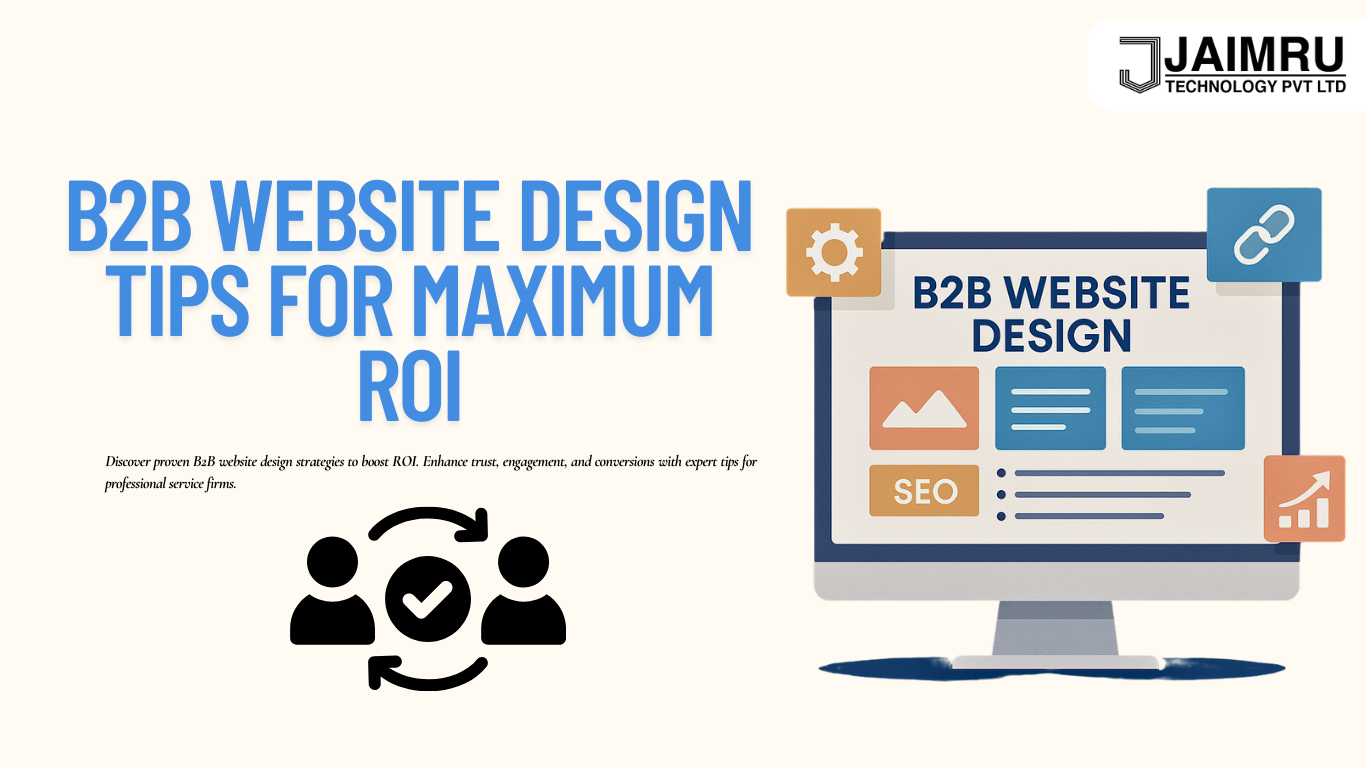
Posted On : 22-05-2025 15:16:00
The digital-first market of today makes your website design function as the top-performing sales representative rather than a simple online brochure. Websites serve as vital tools in the B2B industry for professional service sectors, including consulting, law, accounting, and engineering, to establish trust and convert prospects into customers.
Numerous professional service websites remain outdated because they present large amounts of written content combined with common text and function at a frustratingly slow pace.
The upcoming piece will analyze proven design methods that boost conversion rates on B2B websites while focusing on professional service company requirements.
Learning about the buyer journey in B2B professional services should be your initial step before tackling design aesthetics and layouts.
Unlike ecommerce or B2C sales, B2B sales:
Your website needs to engage visitors through their complete buying process, which consists of three defined stages: awareness, consideration, and decision.
Your website’s first 5 seconds make or break engagement. The "above the fold" area (the part visible before scrolling) must communicate:
Include a strong headline, a subheading, and a primary call to action (CTA), such as:
“Business Consulting Services for Mid-Sized Manufacturers: Streamlining Operations through Lean Consulting”
Request a Free Strategy Session
A clean hero section with professional website visuals, not stock photography clichés, reinforces your value proposition.
B2B services are high-stakes. Clients want to know you’re credible, knowledgeable, and proven.
Here are some trust-building design elements:
A minimalist but high-impact section featuring 3–5 client success stories can drastically increase conversion confidence.
Professional service firms often offer multiple services with nuanced value propositions. Avoid overwhelming your users with a cluttered menu.
Don’t bury key pages—build intuitive pathways so users can explore naturally without getting lost.
It’s 2025. If your site isn’t fully optimized for mobile, you're already losing business.
B2B buyers often conduct early research on mobile before switching to desktop. Ensure your site supports both.
Design isn’t just visual—it includes content hierarchy and copywriting that leads users to take action.
Each of these should have clear CTAs and SEO-optimized copy to drive both traffic and conversions.
A common mistake? A “Contact Us” form is the only conversion point.
Reducing friction in these interactions boosts your conversion rates.
Even the best website design won’t help if nobody finds your site. Search engine optimization (SEO) and speed performance directly influence both visibility and user engagement.
Pair this with a blog strategy targeting long-tail keywords your clients are searching for.
Designing a high-converting website isn’t a one-time project—it’s an ongoing process.
Track:
This data informs A/B testing and iterative improvements, turning your site into a lead-generation engine over time.
B2B doesn’t mean boring. Show your firm’s personality. Feature team photos, tell your origin story, highlight community impact, or share your values.
People still buy from people—even in professional services.
Include:
This approach builds emotional connection, which can be a key differentiator in a crowded field.
Professional service firms view their websites as business development tools that operate continuously throughout the day. Your website can develop trust and attract leads while creating business growth through user-friendly design and engaging content.
A lack of expected leads and credibility through your website trends should motivate you to reconsider the strategic approach rather than focusing on its visual appearance. The situation appears promising because most companies possess substantial unutilized resources among their existing assets.
Your future clients are researching firms like yours right now. Make sure your site is the one that convinces them to take the next step.
Copyright 20-2025 Jaimru Technology Private Limited | All Rights Reserved.